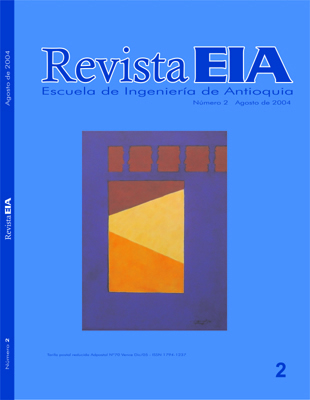FRICTIONLESS CONTACT IN A LAYERED PIEZOELECTRIC MEDIUM COMPOSED OF MATERIALS WITH HEXAGONAL SYMMETRY
FRICTIONLESS CONTACT IN A LAYERED PIEZOELECTRIC MEDIUM COMPOSED OF MATERIALS WITH HEXAGONAL SYMMETRY


This work is licensed under a Creative Commons Attribution-NonCommercial-NoDerivatives 4.0 International License.
Copyright statement
The authors exclusively assign to the Universidad EIA, with the power to assign to third parties, all the exploitation rights that derive from the works that are accepted for publication in the Revista EIA, as well as in any product derived from it and, in in particular, those of reproduction, distribution, public communication (including interactive making available) and transformation (including adaptation, modification and, where appropriate, translation), for all types of exploitation (by way of example and not limitation : in paper, electronic, online, computer or audiovisual format, as well as in any other format, even for promotional or advertising purposes and / or for the production of derivative products), for a worldwide territorial scope and for the entire duration of the rights provided for in the current published text of the Intellectual Property Law. This assignment will be made by the authors without the right to any type of remuneration or compensation.
Consequently, the author may not publish or disseminate the works that are selected for publication in the Revista EIA, neither totally nor partially, nor authorize their publication to third parties, without the prior express authorization, requested and granted in writing, from the Univeridad EIA.
Show authors biography
A matrix formulation is presented for the solution of frictionless contact problems on arbitrarily multilayeredpiezoelectric half-planes. Different arrangements of elastic and transversely orthotropic piezoelectric materials within themultilayered medium are considered. A generalized plane deformation is used to obtain the governing equilibrium equations for each individual layer. These equations are solved using the infinite Fourier transform technique. The problem isthen reformulated using the local/global stiffness method, in which a local stiffness matrix relating the stresses and electricdisplacement to the mechanical displacements and electric potential in the transformed domain is formulated for each layer. Then it is assembled into a global stiffness matrix for the entire half-plane by enforcing interfacial continuity of tractions and displacements. This local/global stiffness approach not only eliminates the necessity of explicitly finding the unknown Fourier coefficients, but also allows the use of efficient numerical algorithms, many of which have been developed for finite element analysis. Unlike finite element methods, the present approach requires minimal input. Application of the mixedboundary conditions reduces the problem to an integral equation. This integral equation is numerically solved for theunknown contact pressure using a technique based on the Chebyshev polynomials.
Resumen: Se presenta una formulación matricial para la solución de problemas de contacto sin fricción en semiplanos piezoeléctricos elásticos de múltiples capas. Se consideran diferentes disposiciones de materiales piezoeléctricos elásticos y transversalmente ortotrópicos dentro del medio de múltiples capas. Se usa una deformación de plano generalizada para obtener las ecuaciones gobernantes de equilibrio para cada capa individual, que se resuelven con la técnica de transformada de Fourier infinita. Entonces el problema se reformula con el método de rigidez local/global, en el cual se formula para cada capa una matriz de rigidez local que relaciona los esfuerzos y el desplazamiento eléctrico con los desplazamientos mecánicos y el potencial eléctrico en el dominio transformado. En seguida se ensambla en una matriz de rigidez global para todo el semiplano imponiendo la continuidad interfacial de tracciones y desplazamientos. Este enfoque por rigidez local/global no sólo elimina la necesidad de hallar explícitamente los coeficientes de Fourier desconocidos, sino que también permite el uso de algoritmos numéricos eficientes, muchos de los cuales se desarrollaron para análisis por elementos finitos. A diferencia de los métodos de elementos finitos, este enfoque requiere una entrada miníma. El uso de condiciones de borde mezcladas reduce el problema a una ecuación integral, que se resuelve para la presión de contacto desconocida con una técnica basada en los polinomios de Chebyshev.
Article visits 224 | PDF visits 130
